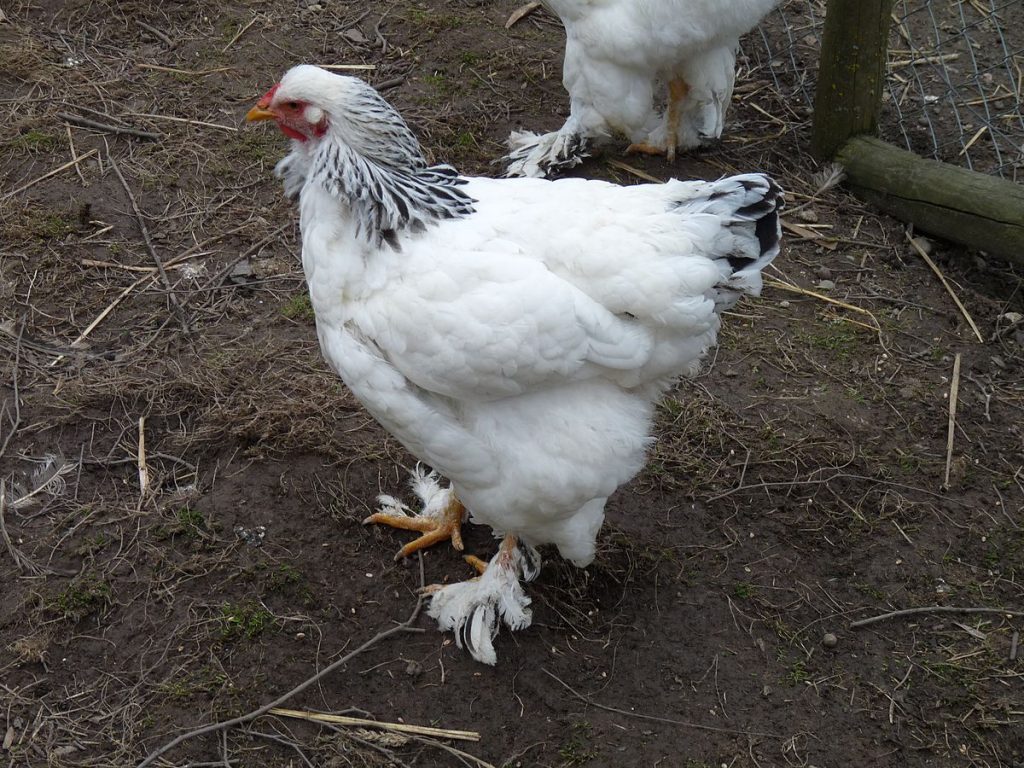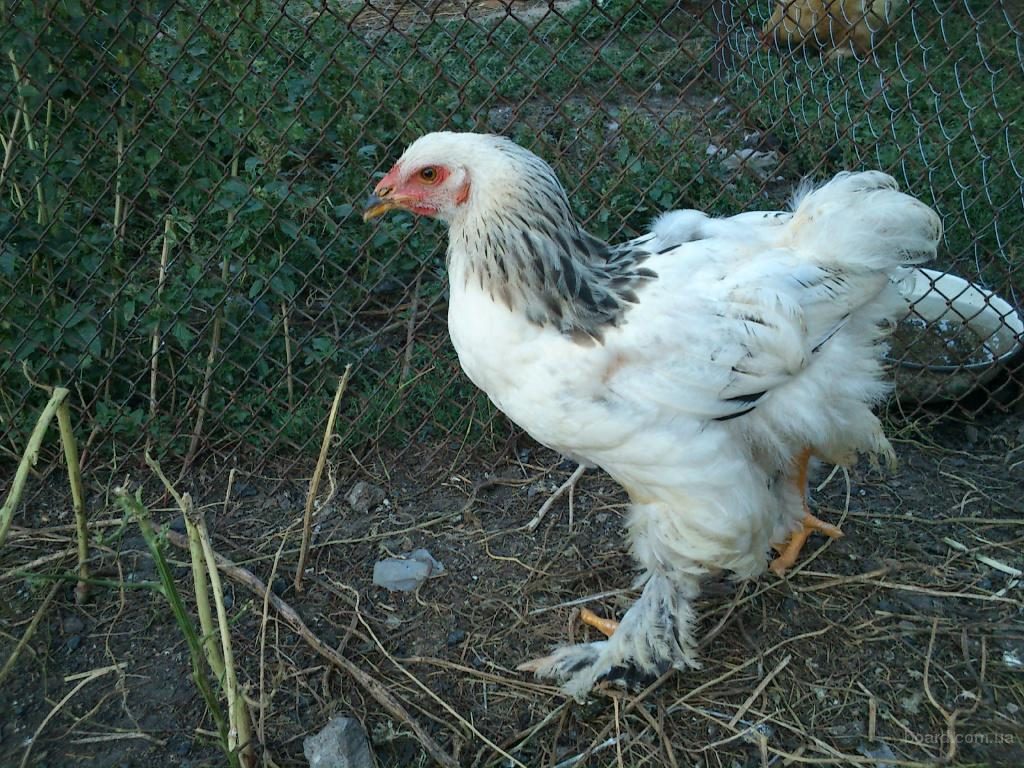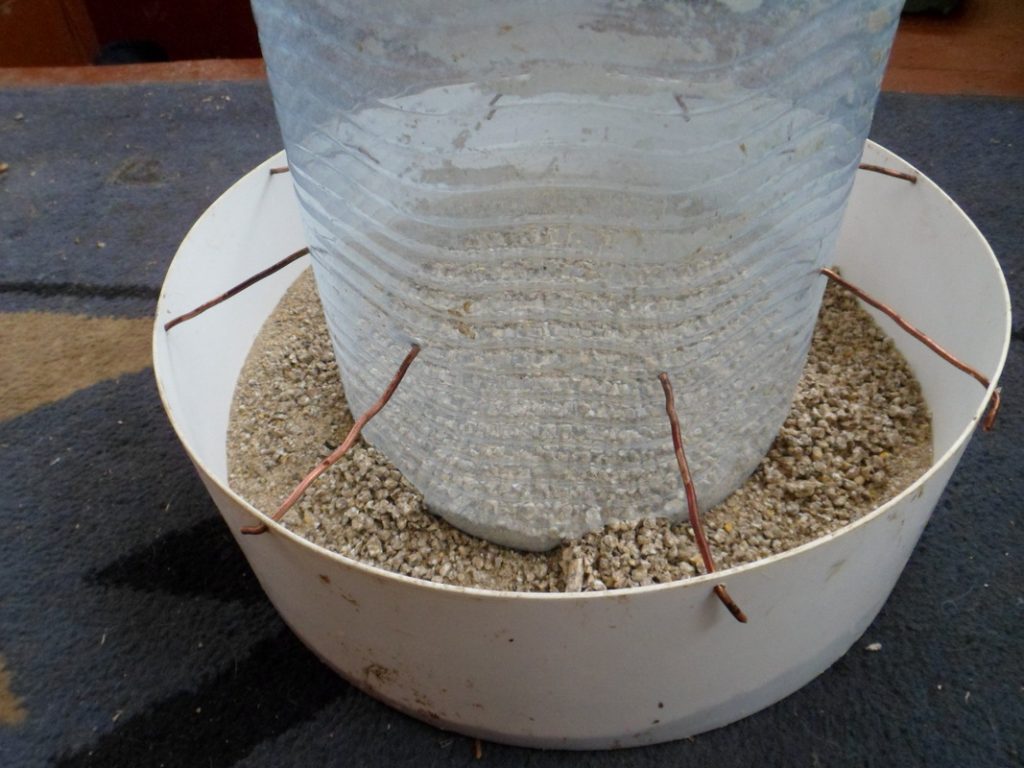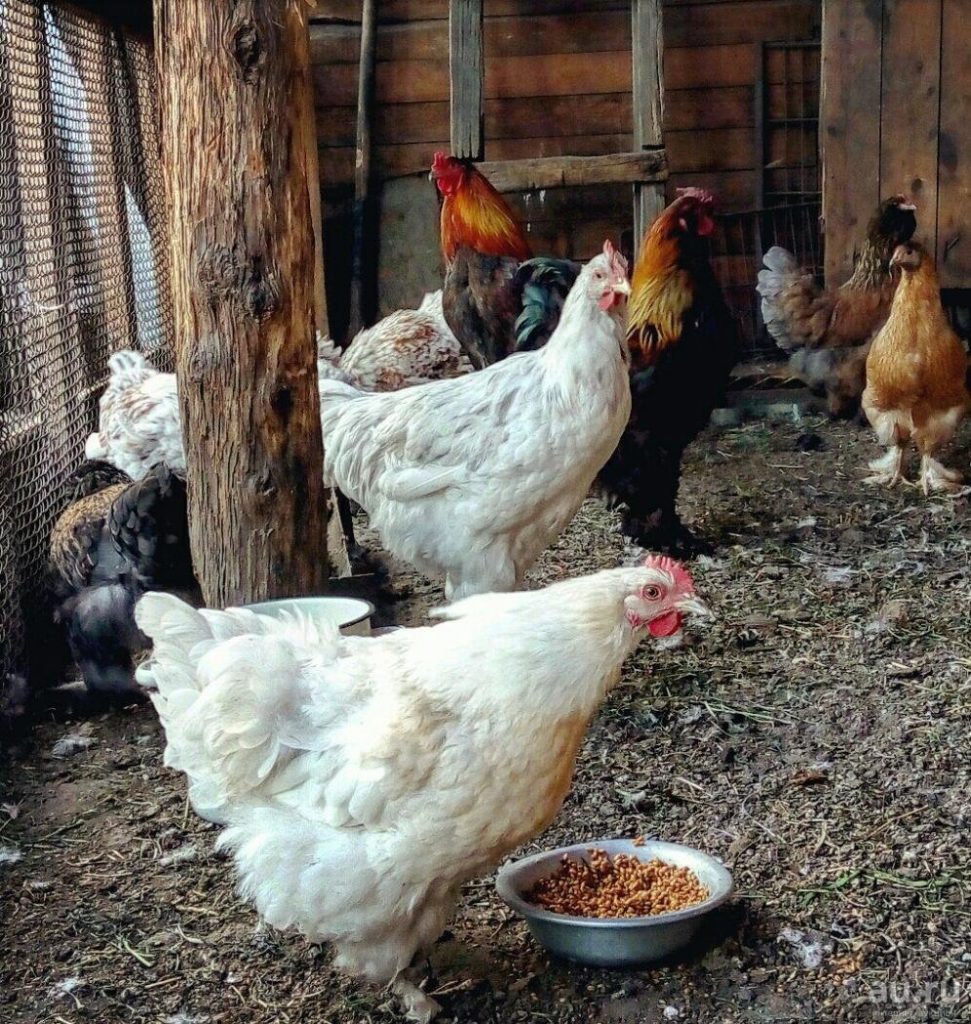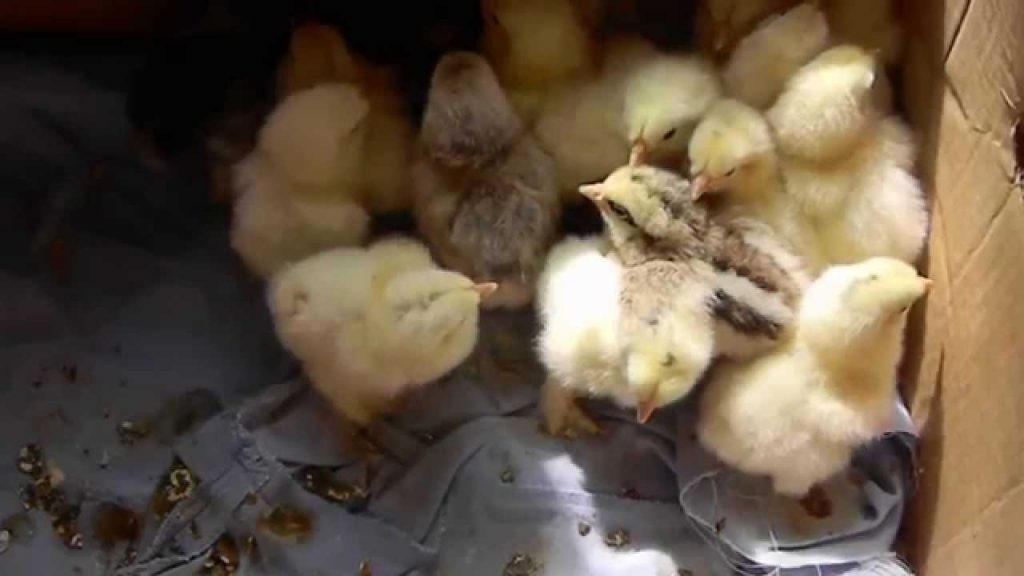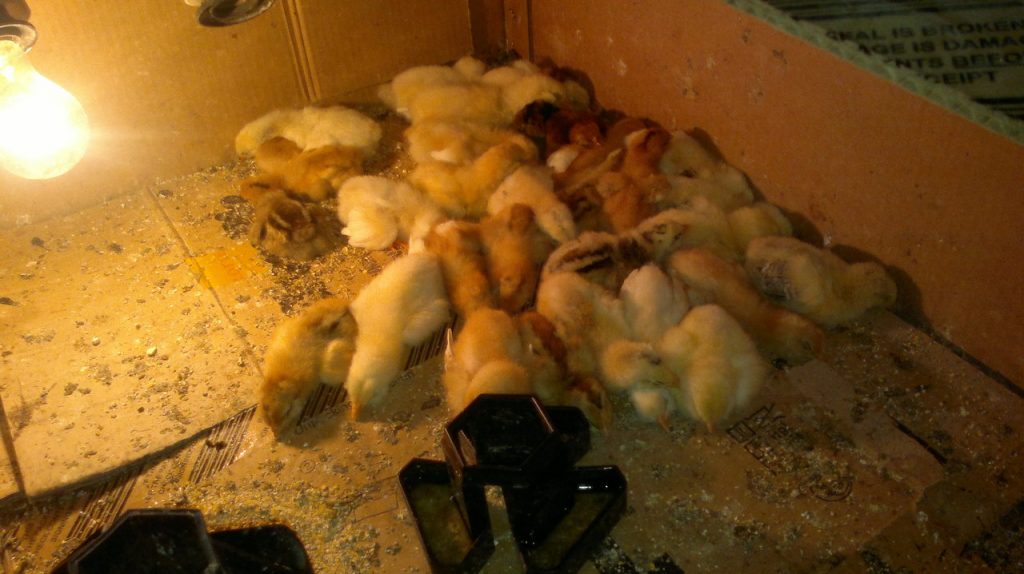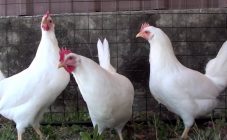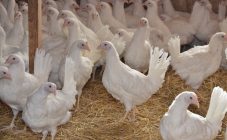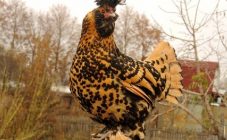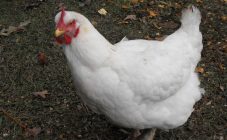Content:
Choosing a breed of chicken for a home farm, most poultry farmers are guided not only by meat and egg characteristics. They want domestic chickens to please the eye with an attractive appearance.
One of the popular breeds of domestic chicken breeds is Brahma. Large beautiful chickens attract attention with their unusual appearance, are famous for their peacefulness, and have good meat qualities. What is Brahma, a breed of chickens for a home farm, will be discussed in this article.
Chickens Brama: general information
The Brama breed was officially recognized in the middle of the 19th century in the United States of America. However, the characteristics of the bird's appearance indicate the Asian roots of these chickens. Experts say about the presence of ancient Chinese chickens in the ancestors of Brahma: Chittagong (one of the varieties of the Cochin Khin breed), Brahmaputra and Shanghai Gray. The Malay chickens also took part in the formation of Brahma.
The goal of the breeders was to get chickens that are unpretentious in terms of keeping conditions and with excellent meat qualities. The goal was fully achieved - adult representatives of the breed reached a weight of 6-7 kg. The chicken meat was tender and juicy.
Today there are several types of Brahma: European, American and buff (Pale brahma). The bird of the European type is somewhat smaller than the American one, but has a more magnificent plumage and a body shape close to the Cochin.
Modern poultry lovers keep the Brahm chickens as an ornamental bird. With the advent of early maturing meat hybrids of chickens (broilers), Brahma lost its significance as a meat bird. Breeding the breed on industrial farms is not economically profitable, but in small farms, Brama continues to be successfully grown.
Description of appearance
The description of the Brahma chicken breed should begin with the fact that the bird has a proud posture, its movements are devoid of fussiness. The body of the hen is in the form of a square, the rooster is an elongated rectangle. The height of the rooster can reach 60 cm. The back of the hens is short and wide. The chest is broad and well muscled. The skeleton is strong, but not massive. The legs are high and powerful, covered with stiff feathers. The skin is thin and has a yellowish color.
Brahma's head is small, with a small pea-shaped ridge, with a clear division into three parallel grooves. The beak is small, strong, yellow or with a black stripe. The eyes are large and orange. The face is bright red.
The tail is small, fan-shaped. In the rooster, it is planted vertically, in the chicken, somewhat on the fly.
The plumage of Brahma is dense, it fits snugly to the body. The looseness of the pen, characteristic of Cochinchin, is considered a vice in Brahma. The rooster has a luxurious mane of long feathers descending to the shoulders.
The legs of the bird are abundantly feathered: the entire metatarsus, outer and middle fingers are covered with a feather. In a day old chick, legs are similarly covered with down.
Colors
- Light or Colombian.
The body and head of the bird are painted in white-silver color. The necklace and feathers on the legs are interspersed with black feathers. The tips of the flight feathers are on the wings, the tail is black with a blue tint.
Color defects: yellowish feather, white tail.
- Dark.
The main tone of plumage is brown or dark yellow. There is a drawing or a crescent border on the feather. Males of Brahma are almost black in color, with a small amount of white feather on the back.
- Fawn (buff).
The body of the bird is covered with light brown or dark brown plumage. There are black feathers on the mane. Feet with light down creates the effect of pantaloons worn on the bird.
- Partridge.
The main fawn tone of plumage in females is painted with a dark complex pattern. The mane and lumbar feathers of males shimmer with a reddish color, the tail is black.
Description of the egg production of the Brama chicken breed
Brama cannot be attributed to egg chickens. The annual productivity of poultry is 110 - 120 eggs weighing 54 - 60 g. The color of the egg shell is cream.
A young female begins to rush no earlier than 7 - 8 months. At the age of 3 years, the laying hen sharply reduces the number of laid eggs, then it is inappropriate to keep it.
The chicken of this breed has not lost its incubation instinct. She regularly sits on eggs and leads the offspring.
The safety of chickens under hens is 70%, with artificial rearing - more than 80%.
Keeping chickens on a home farm
Brahmas are perfectly adapted to cold climates and do not need additional heating of the chicken coop. The bird will be comfortable in a wooden or brick shed, where the winter temperature does not drop below zero.
Poultry stocking density - no more than 3 adult chickens per 1 sq. meter of floor area.
The size of the bird and the impressive weight do not allow Brama to settle for the night on a standard chicken perch. Instead of perches, they install bars or sturdy boards that can withstand large birds. Some poultry farmers build ladder-shaped plank shelves for Brama to sleep in.
Inside the premises, in addition to perches and nests (according to the size of the bird), they are equipped with feeders for dry and wet feed, drinkers, and nets for grass.
If the temperature in the barn in winter is not conducive to laying eggs, there is no need to artificially extend the daylight hours. In natural light, Brahmas take a break from laying eggs in winter. Chicken Brahma begins production of eggs in March, with the arrival of warm days.
It is necessary to attach a pen to the barn where the chickens are kept. For a standard family (a cockerel and 5 chickens), there is enough walking area of 3 - 4 square meters. m. Part of the walking area is covered with a canopy so that the bird can walk in bad weather. Brahmas are not afraid of frost, and can walk in the fresh air in winter.
Feeding
The organization of feeding the brama does not differ from feeding chickens of other breeds. The bird should be fed:
- special compound feed for chickens or grain (wheat, barley, oats, corn, millet);
- vegetables (pumpkin, carrots, beets, cabbage, zucchini);
- greens;
- food and milk waste.
The grain is better eaten by the bird if it is crushed or sprouted. Vegetables are grated on a grater for chickens or cut into halves for an adult bird. The grass (quinoa, beetle, alfalfa) is hung in the form of brooms or placed in a nursery. In winter, the bird is fed with dried nettle and quinoa brooms.
A prerequisite for a good egg-laying of a chicken is the availability of a freely available source of calcium (chalk, seashell, crushed eggshell).
Due to the tendency to obesity, in feeding Brahma, one should adhere to the norms of giving grain feed (no more than 150 g per individual per day).Laying hens and breeding birds are not given potatoes, since Brahma is quickly salted from it. Greens can be fed ad libitum.
It is necessary to adhere to the chicken feeding regimen. As a rule, this is two times a day feeding. In the morning, a damp mash with kitchen waste and other additives, dry grain at night. In winter, snow is allowed instead of water.
Breeding chickens at home
Low egg production, a small number of females per breeder and a difficult rearing of young animals make Brahm chickens an expensive bird. The cost of a daily chicken reaches 500 rubles. Successful reproduction of chickens of this breed is possible, subject to a number of rules:
- landing no more than 4 - 5 chickens per rooster;
- collection of breeding eggs in April - June (chicks of a later hatch grow worse);
- the nutrition of breeders should be balanced and rich in vitamins;
- eggs for hatching are preferable to lay in an incubator, due to the large weight of the hen.
To prevent a heavy rooster from injuring the chicken's back with sharp claws, they are treated with a nail file.
It is important not to feed chickens during breeding season. Sprouted oats and vegetables should be preferred.
Brahm chickens need careful care. They take a long time to grow and are susceptible to infections and inadequate feeding. Little Bram should be raised separately from other breeds and adult birds for up to 4 months until they are fully grown.
Chick care, housing and feeding
The babies dry after hatching from the egg are placed in a box or a special brooder equipped with heating and lighting. The temperature during the first period of the life of the chickens is maintained at +35 degrees. From the second week of life, the temperature is lowered by 3-4 degrees per week, bringing it to the usual room temperature.
From birth to a month, lighting is round the clock. Later, the lights are turned off at night.
If the chicken's legs are moving apart, the situation can be corrected by tying them with a woolen thread or a strip of bandage for a couple of weeks.
The best first feed for chicks is considered to be starter feed of well-known brands (for example, Purina). Dry feed pellets are poured into the troughs ad libitum. In addition to compound feed and clean water, up to ten days of age, the chicks do not need anything else.
After 10 days, herbs, cottage cheese, vegetables, grated on a grater are gradually introduced into the diet. Best greens for chickens:
- green onions;
- dandelion;
- quinoa;
- alfalfa.
If the feed cannot be used, the chickens are given a hard-boiled egg. It is sprinkled with corn grits.
In the absence of complete feed, the Bram chicks need to be given vitamins. There are premixes for chickens (Solnyshko). They are mixed with feed just before serving. Sometimes vitamins are used in liquid solution, adding them to drinking water.
Domestic chickens of Brama grow better if they have the opportunity to walk outside from 1.5 months of age. The air temperature should not fall below +22 degrees, and the chicks should be able to move to a heated shelter at any time.
Grown young chicks should be transferred to a common chicken coop no earlier than 4 - 5 months of age. To alleviate the stress of the transplant, ascorbic acid (1 tablet per 0.5 l) is added to the bird's drinking water for 5 days.
Due to its calm and peaceful nature, there are no fights in a chicken flock of this breed. Several families with roosters can even live in one room.
Advantages and disadvantages of the breed
Thinking about which breed of chickens to choose from, the poultry breeder evaluates the bird by its economic and decorative qualities. The undoubted advantages of chickens of the Brama breed include:
- docile character and friendliness;
- attractive appearance;
- good adaptability to cold weather;
- developed hatching instinct;
- delicious meat.
Cons of the breed:
- slow growth;
- low egg production;
- difficulties in raising young animals.
Today there are a lot of more productive birds (Plymouthrock, Kuchinskaya, Rhode Island) than Brahma. However, lovers of large and stately birds are not stopped by the small economic benefits of this breed. They are bred as a decoration of the poultry yard and are used as "living incubators". In addition, an adult bird is unpretentious, does not cause trouble for its owner.
